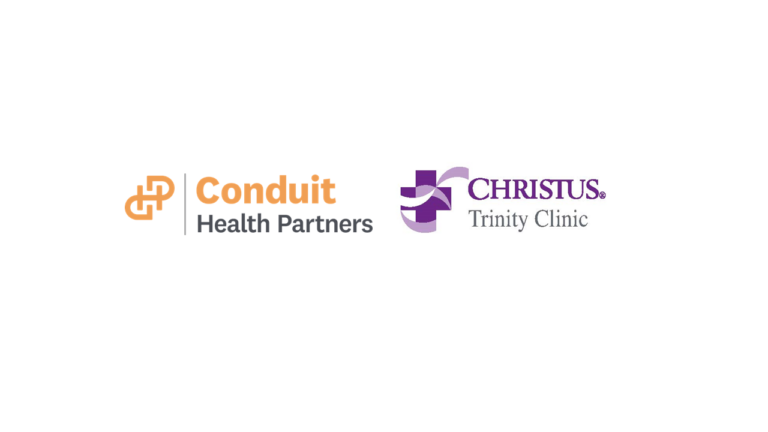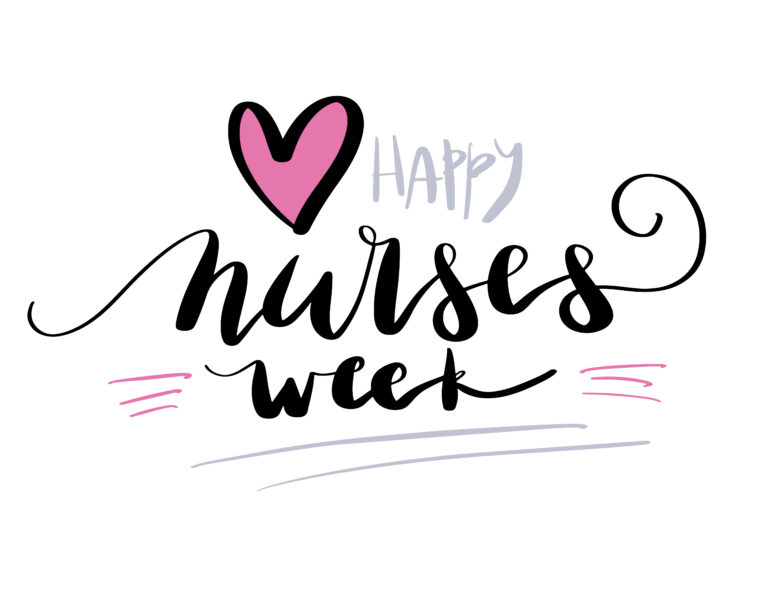
Recent News

5 Tips To Optimize Your Transfer Center
Optimizing your health care transfer center is a crucial step in enhancing patient flow, reducing wait times, and improving overall care coordination.
How Outsourcing Transfer Processes Helps Keep Nurses at the Bedside, Not the Phone
Health care executives are all too familiar with the ongoing challenge of staffing shortages and the pressure to improve operational efficiency.

Behavioral Health Collaboration Reduces Emergency Department Length of Stay by 64%
Focus on timely transfer for acute behavioral health patients improves patient safety and outcomes
A recent collaboration between Conduit Health Partners and Mercy Health — Springfield Regional Medical Center has significantly streamlined care transfers of behavioral health patients from the emergency department (ED) to appropriate care settings.

Optimize Transfer Center Practices to Improve Patient Acquisition Whitepaper
Health care is changing. Fast. But one constant remains — the challenge of managing the flow of patients in and out of your hospital or health system.
Even before COVID-19, patient transfers were problematic for most hospitals and health systems. Then, the pandemic added more strain. Finding the best way to handle patient flow has become increasingly difficult, with higher patient volumes and staff shortages.

CHRISTUS Health and Conduit Health Partners Expand Access to Care
Collaboration with CHRISTUS Trinity Clinic brings after-hours nurse triage to CTC communities
CINCINNATI, Ohio and IRVING, TX (Oct. 9, 2023) — CHRISTUS Trinity Clinic, the medical provider group of CHRISTUS Health, is collaborating with Conduit Health Partners to bring after-hours telephonic nurse triage care to their patients through Conduit’s nurse-first model where callers have immediate,

Leading with Purpose and Empowering Teams: Spotlight on Hannah Hardy
At Conduit Health Partners, our success is driven by dedicated associates who support their teams and ensure seamless patient care. Meet Hannah Hardy BSN, RN, Supervisor Line Lead at Conduit, whose leadership and passion for empowering others make a difference every day.
A Leader in Patient Transfers
Since joining Conduit in May 2021,

Learn How Technology and Outsourcing Can Empower Nurses and Improve Patient Care
Conduit Predicts Continuation of Labor Shortages in 2025.
As the health care industry braces for another year of challenges and innovation, workforce shortages remain a critical concern. According to Cheryl Dalton-Norman, president of Conduit Health Partners, the solution lies in leveraging technology and rethinking workflows.
In an article with Healthcare IT Today,

The Health Care Topics that Topped the News in 2024
As we set our sights on 2025, let’s take a moment to look back at the major stories that shaped health care in 2024. With AI making waves across the industry, we thought it only fitting to turn to the very technology that’s been making headlines for insight into the health care topics that topped the year.

Embracing the Hybrid Workforce Model: A Solution to Nursing Burnout
With nurse burnout on the rise, health care organizations need fresh strategies to support and retain these essential workers.
Dusti Browning, VP of Growth and Client Solutions at Conduit Health Partners, details in an article with Employee Benefit News the promising approach of adopting a hybrid workforce model that allows nurses to split their duties between virtual and bedside care.

AI-Enhanced Transfer Services: Increasing Efficiency and Speed for Critical Patient Transfers
In urgent medical situations like stroke, fast and efficient patient transfers can be the difference between life and lasting disability. Conduit Health Partners, through its transfer center services, plays a crucial role in expediting these critical moves.
Such was the case at Mercy Health – Kings Mills Hospital in Cincinnati, Ohio when a patient arrived presenting stroke symptoms.

Bridging the Health Care Accessibility Gap: Insights from Cheryl Dalton-Norman on the LifeBlood Podcast
In a recent episode of the LifeBlood podcast, Cheryl Dalton-Norman, president of Conduit Health Partners, discussed the critical issues impacting health care accessibility and outcomes today. With her background in health care, Cheryl shared insights on why health care access remains a significant challenge and how innovative approaches can help bridge the gap between patients and providers.

Why Nurse-First Triage Matters: The Key to Patient Safety and Satisfaction
In health care, the first point of contact is critical. When patients call for clinical advice, especially in urgent or uncertain situations, they need timely, expert guidance. Nurse-first triage models stand out because they place clinically trained professionals—nurses—at the forefront of this process. This approach not only improves patient satisfaction but also ensures safer and more effective care decisions.

Partnering for Better Patient Care and Access
Cheryl Dalton-Norman explains how Conduit is Transforming Patients’ Access to Quality Care
Transforming patient care and access by partnering with health systems to streamline patient navigation is our passion at Conduit Health Partners. In an interview with Pulse 2.0, Cheryl Dalton-Norman, president of Conduit Health Partners,

Enhancing Patient Safety with Conduit’s Nurse-First Triage
A Solution to Overcome Nurse Burnout for Medical Groups
Patient safety and streamlined operations are critical for any medical group, but achieving this balance can be challenging. This is where Conduit Health Partners’ nurse-first triage solution becomes invaluable. Take Kenosha Community Health Center (KCHC) as an example—a Federally Qualified Health Center (FQHC) that turned to Conduit to address critical gaps in their patient care process.

Integrating a Patient Transfer Center into Your Health System: A Guide for Health Care Leaders
A patient transfer center can play a pivotal role in optimizing patient flow and enhancing outcomes across your health system. However, implementing such a system requires careful planning, strategic execution, and an emphasis on change management. This article outlines the top strategies healthcare leaders can employ to successfully integrate a patient transfer center,

From Critical Care to Conduit
The COVID-19 pandemic had a profound impact on many healthcare professionals, including Amanda Miller, the clinical manager of Conduit’s transfer center service. As a critical care nurse and later a clinical manager of a critical care unit, she witnessed the devastating effects of the virus and the immense pressure it placed on the healthcare system.

Enhancing Patient Care Through Innovative Solutions
In a recent interview with RamaOnHealthcare, Dominique Wells, chief operating officer at Conduit Health Partners, shares insights on improving patient care through strategic innovations. With a rich background in nursing and health care technology, Dominique now leads Conduit’s efforts in providing nurse-first triage,

Streamlining Behavioral Health Transfers
One of the most challenging patient situations for a health system is providing efficient and effective care to patients with suicidal ideations. Suicidal ideations demand urgent attention, yet shortages in behavioral health (BH) care beds often leave patients waiting in emergency departments (ED) for days. Not only does this impact the throughput and safety of the ED,

Revolutionizing Health Care Delivery and Patient Care
The COVID-19 pandemic shed light on the critical challenges hospitals face when it comes to transferring patients to facilities that can provide a higher level of care. However, this issue existed long before the pandemic. Cheryl Dalton-Norman, president of Conduit Health Partners, recognized this problem and set out to solve it back in 2017. Her nurse-first triage and transfer service aimed to streamline patient transfers and ensure timely access to appropriate care.

How to Position your Health System for the Future
In an article with MedCity News, “Key to Health System Success: An Entrepreneurial Mindset,” Cheryl Dalton-Norman, Conduit President, shares that incorporating elements of risk that complement a health system’s vision, health care leaders can drive a sustainable growth strategy that benefits patients and staff and better positions the organization for the future.

Conduit solutions featured in a Q & A with The Journal of mHealth
Challenges with patient triage and access existed before the “tripledemic,” defined as the recent surge in flu, RSV and COVID-19 cases. However, the “tripledemic” highlighted weaknesses in healthcare’s ability to handle the surge of patients.
What role does nurse triage play in preventing unnecessary emergency department visits and supporting health care value?

Conduit Leader, Dusti Browning, Featured in Patient Safety & Quality Healthcare (PSQH)
Dusti Browning, vice president of growth and client solutions at Conduit Health Partners, was featured in an article on Patient Safety & Quality Healthcare (PSQH) about “‘Tripledemic’ Reveals Critical Need for Better Patient Triage and Transfer Services.”

Improve Health and Satisfaction with Patient Transfer Solutions
No one can deny that the COVID-19 pandemic put unprecedented strain on the health care system. In its wake came the current “triple-demic” of COVID, flu and RSV, coupled with a severe nursing shortage. Added to these strains, hospitals face a decrease in licensed beds, shrinking margins and supply chain issues.
Meanwhile, patient transfer processes can disrupt your emergency department’s (ED) efficiency. Your ED doctors and nurses work tirelessly to help patients but are often distracted by managing transfers. A lack of available beds, delayed acceptance from neighboring facilities and limited transportation options often leave patients waiting hours for care.

Combating Patient Burnout: How Remote Nurse-First Triage Can Transform Care
Health care consumers are weary of long waits and care encounters that feel rushed and impersonal, leading to patient burnout as many forgo needed care to avoid poor experiences and high costs. This impacts patient access, outcomes and health equity, compelling health care organizations to find solutions to alleviate these challenges.

5 Ways That Nurse Triage Improves Health Outcomes of Health Plan Members
Health plans are increasingly recognizing the importance of helping members navigate their health. With options ranging from telehealth to urgent care to emergency department visits, members often need guidance to make the right care choices. Nurse-first triage solutions can serve as a win-win for health plans, offering a tool to improve health outcomes for their members while decreasing overall health care costs for their organization.

Lessons Learned: A Case Study on Nurse-Triage Solutions and Employee Health
Today’s businesses face many challenges concerning employee health. These range from which strategies to implement to manage health care costs to how best to engage employees in their health and keep them healthy. Navigating these challenges is especially difficult considering workforce shortages and escalating health care costs. According to projections from PwC’s Health Research Institute,

How to Leverage Nurse Triage for Workplace Injury Management
Challenge: Workplace Injury Management
Bon Secours Mercy Health faced a significant challenge in maintaining employee health while effectively managing workplace injuries within its extensive operations of 60,000 employees nationwide. The diversity in processes and lack of standardized protocols hindered the employee health team’s ability to ensure consistent care and manage costs.

Ensuring 24/7 Continued Access to Care at FQHCs: The Benefits of Outsourcing Nurse-First Triage Solutions
Federally Qualified Health Centers (FQHCs) are crucial in providing comprehensive healthcare services to underserved populations yet are faced with unique challenges. One such challenge is ensuring they meet regulatory requirements with limited staff and resources.
To maintain their operational status and receive federal funding, FQHCs must adhere to stringent regulations, including the requirement to ensure their primary health services are available and accessible 24/7 within their catchment areas.

How Pediatric Nurse Triage Benefits Organizations
Pediatric illnesses and emergencies don’t adhere to a 9-to-5 schedule. They can strike at any time, be it the middle of the night, a weekend afternoon, or a holiday. Recognizing this reality, pediatric nurse triage ensures that families have access to timely guidance and assistance when they need it most. This 24/7 accessibility is not just a convenience;

Health care call center solutions to improve patient engagement
Making it easier for patients to manage their own care has become increasingly important for hospitals and health systems. Patients expect and demand convenient solutions to get the care they need when they need it, which often starts with a phone call to a health care call center. There are many benefits to having a robust system that is both responsive to calls and proactive in engaging patients.

Happy Nurses Week
Enjoy this short video we created to celebrate all the fabulous nurses out there. We appreciate the work you do to improve the health care and lives of the people we serve.

Meet Sr. Doris Gottemoeller
In honor of International Women’s Month, we are proud to honor Sr. Doris Gottemoeller.
Sr. Doris is a member of the Conduit Health Partners and Bon Secours Mercy Health board of directors and vice-chair of Bon Secours Mercy Ministries. In her 61 years of religious life, she has served universities, health systems, seminaries and high schools.